The complete guide to raising a kitten: Part 2 – settling into a new home and life
September 02, 2019Now that your new feline friend has a name as special as them, it’s time to help them settle in.
In part 2 of our series, we give you the lowdown on how to ensure all bases are covered so both you and your little meower are set up for a life of love right from day one.
In this blog post, we cover:
- Prepping for kitten’s arrival: poison-proofing your house.
- Housekeeping: registering and microchipping your kitten.
- Setting up a safe haven: helping your kitten settle.
- Food: feeding your kitten the right diet and the right amount.
- Litter: training your kitten to use their toilet.
- Introducing your kitten to other pets: both cats and dogs.
- Keep your kitten safe: night-time confinement and outdoor enclosures.
- Grooming: when and why you should brush your kitten.
- Health: following up on kitten vaccinations and flea and worm treatments.
Let’s get into it!
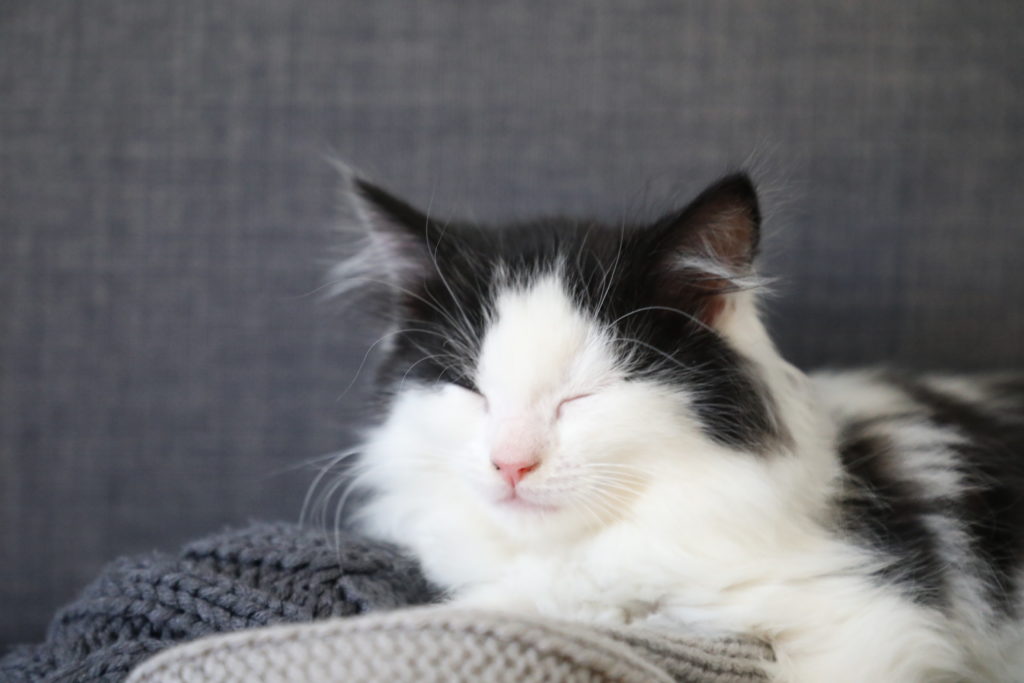
Prepping for kitten’s arrival: how to poison-proof your house
Before you even bring your beautiful ball of fluff home, a few things need to be sorted.
As much as we love kittens’ playfulness and curiosity, it’s this exact nature that could lead them to get their hands on plants or household items that pose a great risk to their health.
Lillies are one of the most toxic plants to poor kitties and can be fatal, with the potential to cause imminent kidney failure. Make sure all lillies are removed from any floral arrangements, pot plants or flower beds before kitten’s arrival so there’s no temptation for them to nibble the pretty flower.
Sorry lilly lovers, but it’s the price to pay!
In addition to lillies, please ensure that the following poisonous items are out of reach of your kitten:
- Batteries
- Vaseline
- Items that your kitten could choke on, including:
- Elastic hairbands
- Wool
- Tinsel
- All medications
- Detergents and fabric softeners
- Bleach and other household cleaners
- Fertilizers that contain poisonous amounts of the following:
- Nitrogen
- Phosphorus
- Potassium
- Iron
- Zinc
- Herbicides and pesticides
- (It’s best to keep kitty away from fertilised lawn until it’s dry)
- Tea tree oil (yes, this includes oil diffusing):
- If you’re big on burning essential oils, stick to pure, diluted oils and steer clear of tea tree oil at all costs
For more information on poisonous plants to animals, our friends at RSPCA Queensland have put together a great downloadable guide to toxic plants.
Remember, if you think your animal is displaying signs of poisoning at any time, please contact your vet immediately!
(And for the lowdown on foods that are poisonous to cats, read through our food section below.)
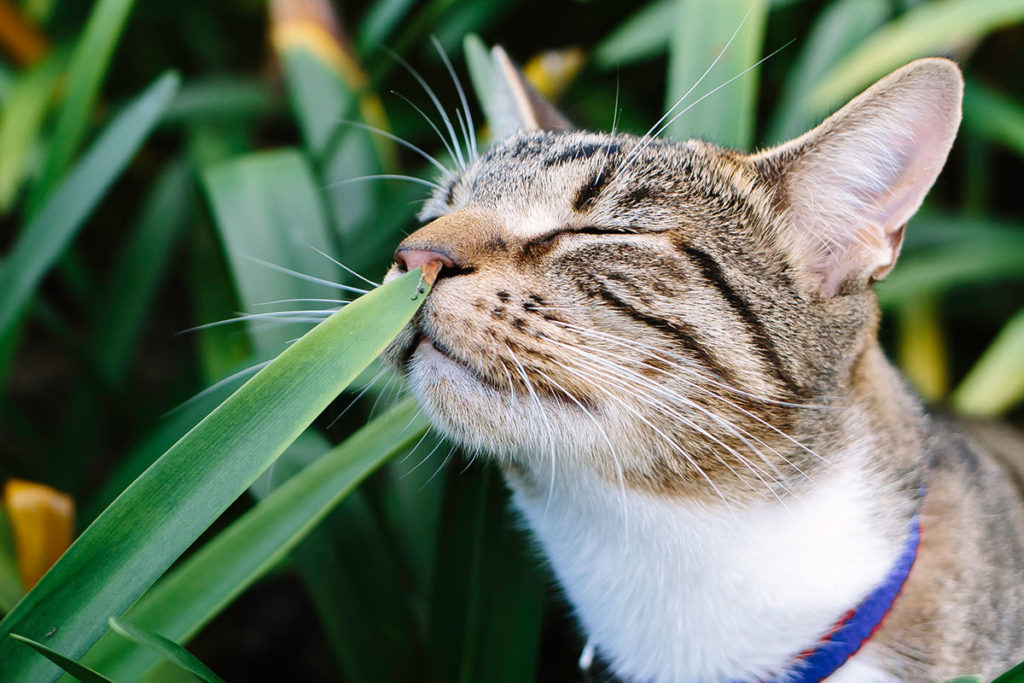
Housekeeping: make sure your kitten is registered with your local council and update their microchipping when needed
It may seem like a trivial step, but if you haven’t already, it’s super important to register your new kitten with your local council.
This is as simple as heading to the Dogs and Cats Online website and entering your details. While not yet a legal requirement in South Australia, registering your kitten can help authorities identify and return your animal to you, should they become lost.
While you’re at it, you might like to call your local council and ask about any cat curfews or specific housing requirements they may have set. Some councils require cats to be kept indoors at night and some may even require cats to be kept on your properly at all times.
Remember, since July 2018, microchipping has been mandatory in South Australia – so it is vital to keep your animal’s details up to date.
Handily, all animals adopted from RSPCA are already microchipped. But you will need to keep your own contact details up to date. If you need to update your kitty’s details at any point – say, when moving house or changing phone number – simply head to Dogs and Cats Online and enter your new address.
If you don’t know your cat’s microchip number, simply take your kitty into your local veterinarian. They can quickly and painlessly scan your kitten and supply you with the microchip number.
Now that you’re aware of all your obligations and duties from your council, you’re well on your way to being a responsible cat owner! Yay!
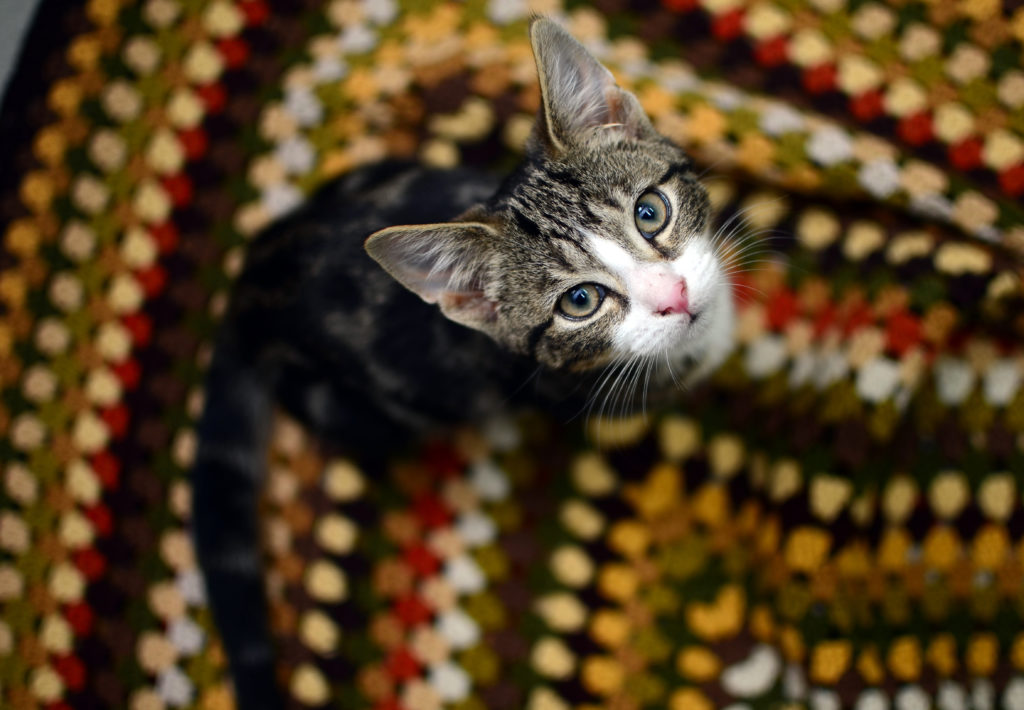
Setting up a safe haven: how to help your kitten ease into their new home
While you may be super excited to introduce your kitten to their new home, the process can be more stressful for our four-legged friends.
To allow your feline to make a more comfortable transition to their new home, it’s a good idea to set up what we call a ‘safe haven’ – a small, quiet and confined area of the house where they can stay until they feel comfortable with the idea of exploring the rest of the house.
For some kittens, this settling in period might be over within hours, while for others it could take days or even weeks. For very timid cats, the process could even take 4 to 6 weeks. Just rest assured that this is normal, and be patient.
You’ll know your furry one wants to leave their haven when they start pawing at the door asking to be let out. When this happens, let kitty explore the rest of the house at their own pace – if they’ve used the litter box at least once, that is!
It’s a good idea to confine kittens to this safe haven whenever you can’t supervise them, until they grow up a bit. By the way – make sure you don’t burn essential oils in the haven, even if you’re not using tea tree oil!
Where?
The best places for a safe haven are a well-ventilated bathroom, a small bedroom, or the laundry. Ideally, pick somewhere where ample natural light streams in.
To set up the haven, furnish it with a cat bed, water and food bowls, some toys, a scratching post near the bed, and a litter box as far away from the bed and food as possible.
The safe haven will also become a place kitty can retreat to any time they need a little space or alone time.
And remember: don’t stress out if your kitten takes a bit longer to adjust.
Everyone is different, and while many kittens settle after just a few days, some can take weeks.

Food: what to feed your kitten, and when
First thing’s first, it’s important to know that adopting a kitten means brining an obligate carnivore into the home. With sharp canines, strong claws and a short digestive track, cats need to eat meat to survive. Remember – cats hunt their own prey in the wild!
The amount your cat needs to eat depends on their age, breed and level of activity, and should be adjusted according to their needs.
Bear in mind, it’s common for kittens not to eat at all within the first 24 hours in a new environment. Make sure to offer your kitty food when you first bring them home, but if they take a day to eat it, don’t worry.
At RSPCA South Australia, we’ll advise you what to feed your kitten when you adopt them.
But – feeding can be individual and may vary depending on each kitten or cat. If you do have any concerns, it’s a good idea to ask your vet to assess your fur-baby as they grow and provide advice on how to adjust their diet.
Since cats prefer to eat multiple small meals per day, we suggest feeding them both in the morning and the evening.
RSPCA recommends providing Royal Canin dry food as the base of your cat’s diet, but including small amounts of wet food on occasion, with quantitates and types adjusted to suit the needs of your cat.
Appropriate quantities of dry food will be advised on the packet.
Remember, overfeeding your kitten can be just as dangerous as underfeeding. It’s best to use a measuring cup or jug and measure out exact amounts of food each feed, to ensure you’re not overdoing it.
In addition to food, make sure your kitten has access to clean drinking water at all times. Please do not give your kitten dairy milk, as this can cause stomach problems.
In addition please steer clear of the following foods and drinks, which are poisonous to cats:
- Chocolate
- Nuts
- Onions and garlic
- Grapes and raisins
- Avocado
- Citrus
- Dairy
- Coffee and caffeine
- Alcohol
If you suspect your kitty has eaten a dangerous food or drink and is showing signs of poisoning, please contact your vet immediately.
Good nutrition is not only super important but can actually be fun and provide a great way to keep your feline mentally alert, so stay tuned for our ideas for homemade cat treats in part 7 of our kitten care series!
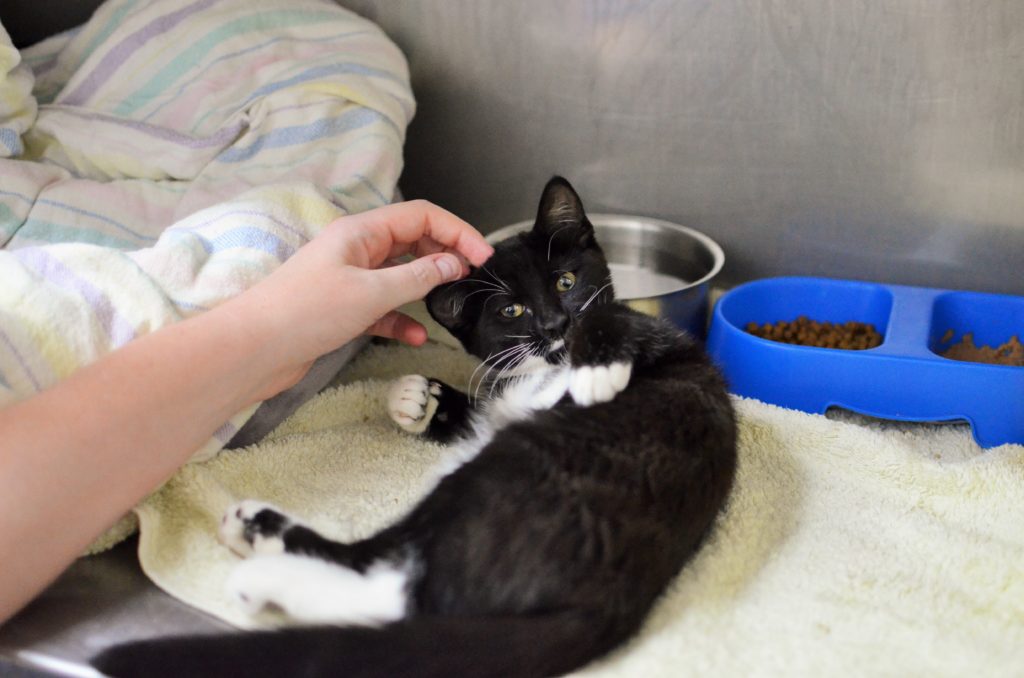
Litter: how to toilet train your kitten
Implementing our safe haven idea is a great way to help train your kitten to use their litter box.
In the haven, it’s important to ensure that kitty’s food and water is positioned well away from the litter tray, though, since most cats will not eat their food if it’s too close to their toilet (and fair enough!).
While a variety of litter trays are available, make sure to choose one with plenty of space and depth for your cat to dig and cover their number twos.
If your kitten seems to avoid their tray, it could be because they don’t like the type of litter you’ve chosen. Cats are fussy creatures! We use unscented and recycled wood pellets (but just be aware that some cats prefer clumpy or clay litter). As a bonus, this litter can be thrown directly into your council green bin, providing a win for the environment.
Ideally, remove your kitty’s business from the tray daily and replace the litter at least once a week. If you allow the tray to become dirty, don’t be surprised if your furry one starts using the floor instead!
Remember to check that cleaning products used are safe for cats. It’s best to avoid strong-scented products, since these may deter your cat from using their tray. Instead, cleaning with boiling hot water and vinegar, then allowing the tray to sun-dry, works perfectly as an environmentally friendly disinfectant.
If your cat starts refusing to do their business in the tray, have a look at our tips for dealing with this in part 3 to this series.
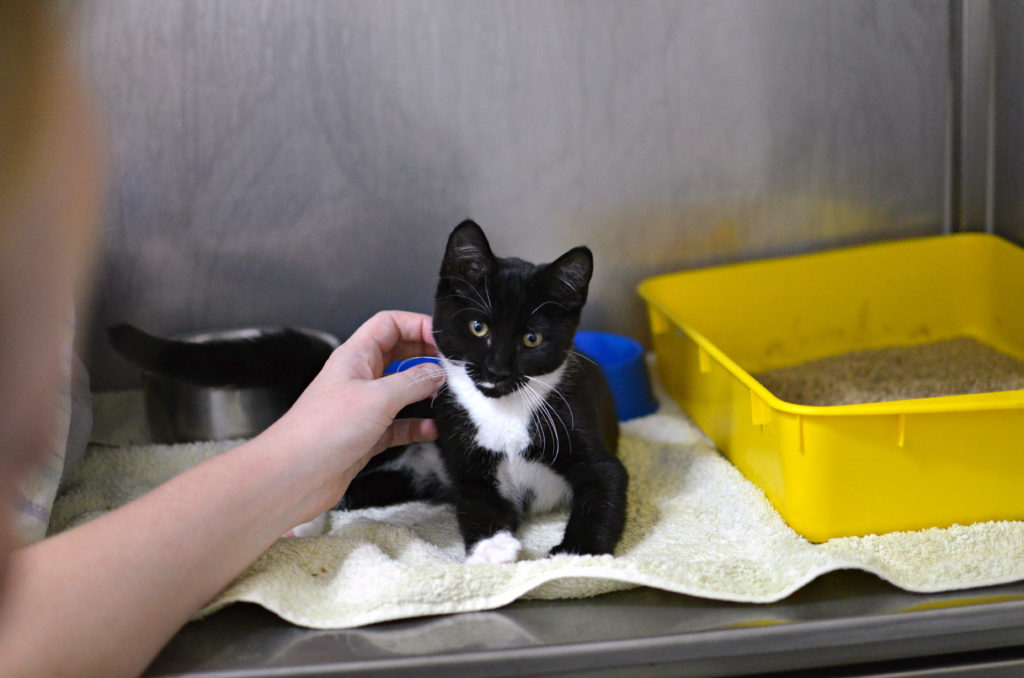
Introducing your kitten to other pets: a gradual process
If you have other animals in your home, make sure to introduce them to your new kitten gradually and while under your supervision.
Many owners make the mistake of assuming that their new kitten and existing animals will simply figure things out and adjust to each other on their own. But this is a dangerous mindset as it’s very rarely the case.
It’s a good idea to associate each supervised interaction with something positive, by rewarding calm and friendly behaviour with treats.
The process differs a little between resident cats and dogs – so we’ve laid out each one below.
Resident cats
Since cats are territorial, they need time to get used to each other before actually meeting face-to-face. For this reason, RSPCA recommends confining your kitten in their safe haven for up to two weeks at first – and a minimum of 10 days.
During this time, allow your resident cat to smell under the door to kitten’s haven. If they hiss or run away, don’t worry! Try to associate the smell of each cat with something positive by feeding both cats on either side of the haven’s closed door.
Next, use a doorstop to prop the door slightly ajar – just enough so that the animals can see each other, but not enough to allow them to get in or out of the room.
If the animals respond to this process positively, you could then switch sleeping blankets or beds between cats so they become further accustomed to each other’s scent.
You could also rub a towel on the kitten and put it underneath the food bowl of your resident cat. This is another way to associate the new cat’s scent with the positive experience of eating.
Once your kitten is using their litter tray and eating well when confined to their haven, give them time to explore the house, while then confining your resident cat to the new cat’s room.
If the cats now seem comfortable with each other’s scents, it’s time to introduce them face-to-face.
Start by bringing your kitten out in their cat carrier and see how it goes. Once they’re comfortable with this, they can meet outside the carrier.
If either animal becomes fearful or aggressive, separate them and start the introduction process from the beginning.
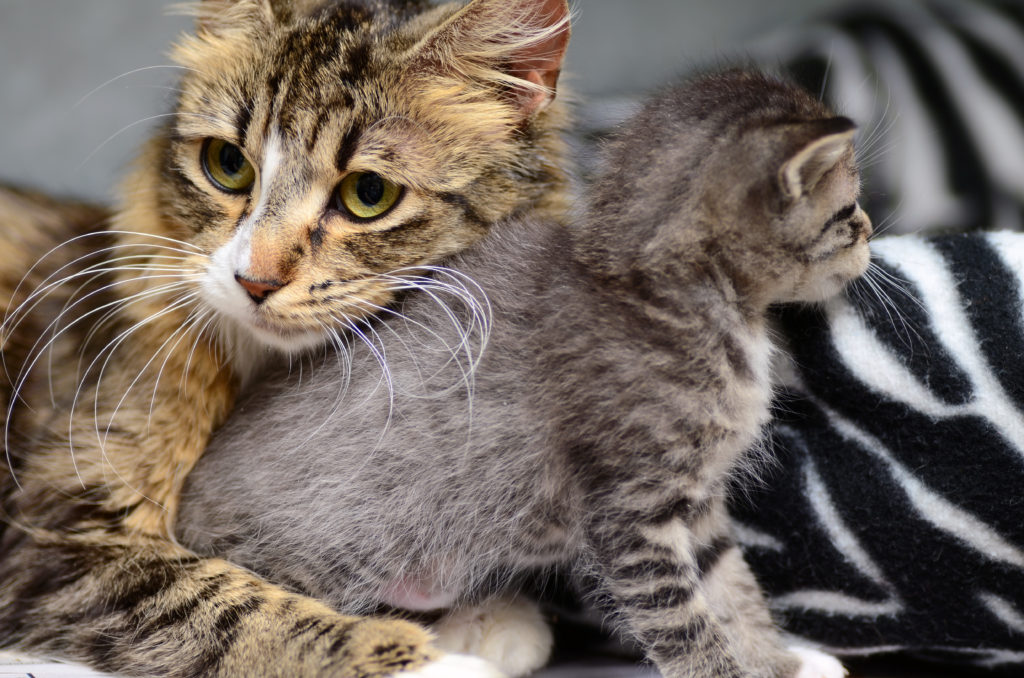
Resident dogs
Similarly to above, start with the process of allowing both animals to smell each other under the door of your kitten’s haven, while also feeding each pet on either side of the closed door.
After propping the door ajar, and switching the animal’s bedding, let your dog outside while keeping your kitten inside so that they can watch each other through the window. It’s a good idea to do this when your kitten is ready to leave their haven and explore the rest of the home.
It’s now time to introduce controlled meetings inside the house.
Keep your dog on their leash and give them a cue to sit and stay while offering a treat. Then, allow your kitten to walk around the room and explore without your dog chasing them.
During this time, make sure that your kitten has access to jump to a height where they feel comfortable (this could be the top of their scratching post or a counter top).
You can repeat this process until both the dog and cat are tolerating each other without fear or aggression.
Whatever you do, make sure that you don’t allow your dog to chase your cat, as this will make them scared and uncomfortable!
Keeping your kitten safe: night-time confinement and the option of an outdoor enclosure
Whether you decide to train your cat to stay on your property at all times or roam during the day, RSPCA strongly encourages the confinement of cats in an enclosed area at night time.
Confining cats to your property during this period can help to protect them from disease and injuries that occur through fighting and accidents, while reducing the impact of hunting and disturbance to neighbours. Some local councils even require night-time confinement as a matter of law.
Plus, if you have a brand new kitten, you don’t need to worry about the stress of sudden confinement for an adult cat who may be used to roaming outside freely.
When it comes to the great debate of whether to confine your cat and if it’s fair at all, we’ve laid out all your options in our detailed guide about how to keep your cat safe and happy indoors.
In our guide, we give you the 101 on outdoor enclosures as a way of allowing your indoor cat to enjoy the outdoors while still staying safe (it’s a scary world out there).
Can’t keep your cat on your property at all times? Outdoor cats get used to routine, so if your puss is allowed to roam during the day when you are out, call them to come inside as soon as you’re back – rewarding with a treat really helps – and they should learn to come home at the same time each day.
If you use a collar for identification, remember that it’s also super important to invest in a quick-release collar and adjust it correctly as your cat grows.
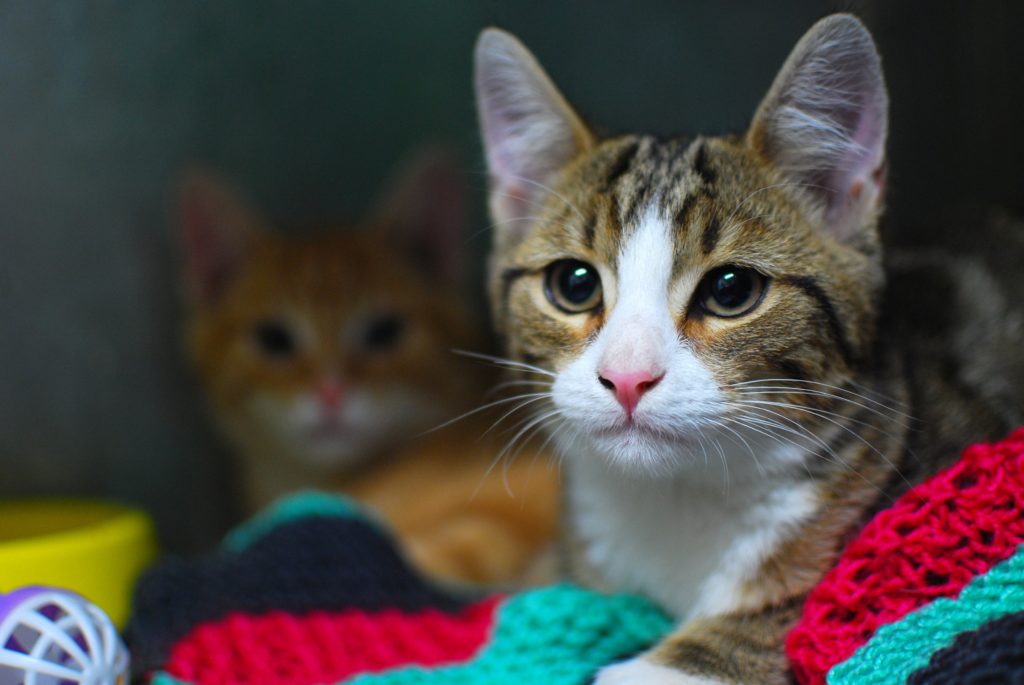
Grooming: when and why you should brush your kitten
We all know that cats love to clean themselves on the regular, but some varieties may still need a bit of grooming help from their fur parent. Without regular brushing, medium-haired and long-haired cats can be prone to furballs, matting and other problems.
So, if your cat has luscious locks, they could benefit from having their coat frequently brushed – and it’s best to start the process when cats are young so they can get used to it.
Short-haired cats may also benefit from regular grooming, mainly because you’ll notice less cat hair stuck all over your couch!
Have a suss of this complete guide on cat grooming, prepared by our friends at RSPCA Pet Insurance.
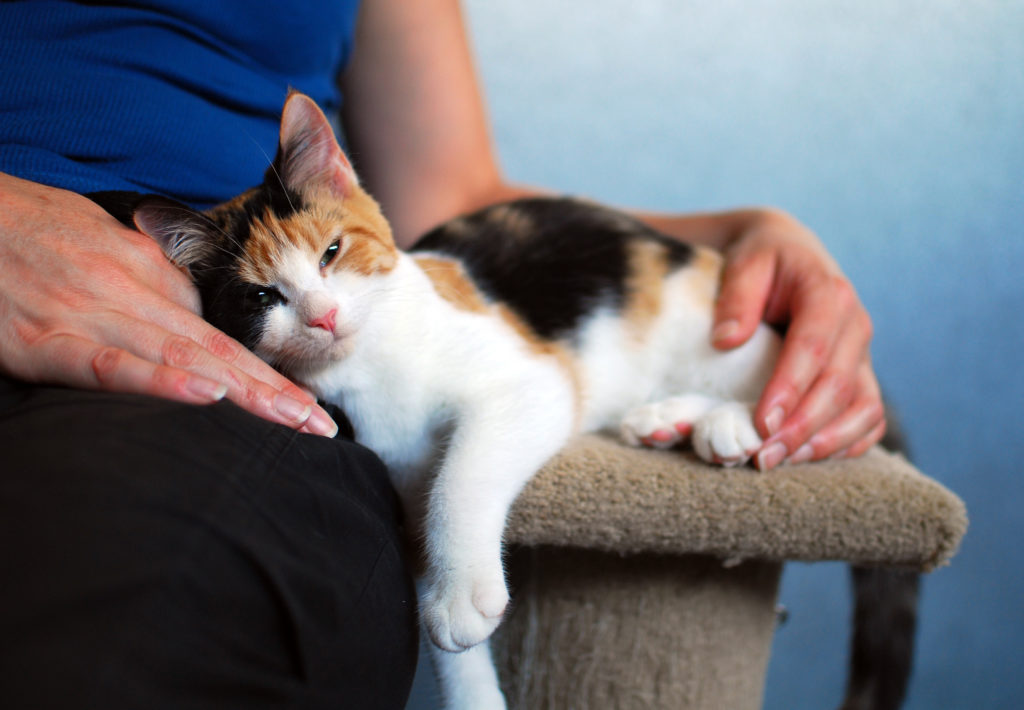
Health: following up on kitten vaccinations and flea and worm treatments
Prior to adoption, all kittens and cats from RSPCA South Australia have received their first set of vaccinations, and are therefore protected from serious diseases including Feline Enteritis and Feline Respiratory disease.
They’ve also been desexed (this is one of the reasons we charge an adoption fee when we rehome an animal), so this is something you needn’t worry about.
But, we do recommend that you administer a flea and worm treatment on your cat monthly. We use Bayer’s ‘Advocate’ flea and worm treatment on all canines and felines in our care, which can be found at any of our shelters. To make it easier for you to keep your kitty flea-and-worm-free, we give everyone who adopts a feline (or canine) from us a voucher for a discount on a 6-pack of this treatment. Being a responsible pet owner has never been so simple, right?
When it comes to vaccinations, some kittens are rehomed before they are ready for their second set. If this is the case, we will give you a vaccination certificate at the time of adoption and advise you to make arrangements with your local vet.
After your kitten has received their second set of vaccinations at three months old, it’s important to remember that they require booster vaccinations every 12 months. Vaccinations are vital to protect your cat from severe infectious diseases, while preventing them from passing anything nasty on to other animals in the area.
Like the other steps in this post, it’s all part of being a responsible cat owner!
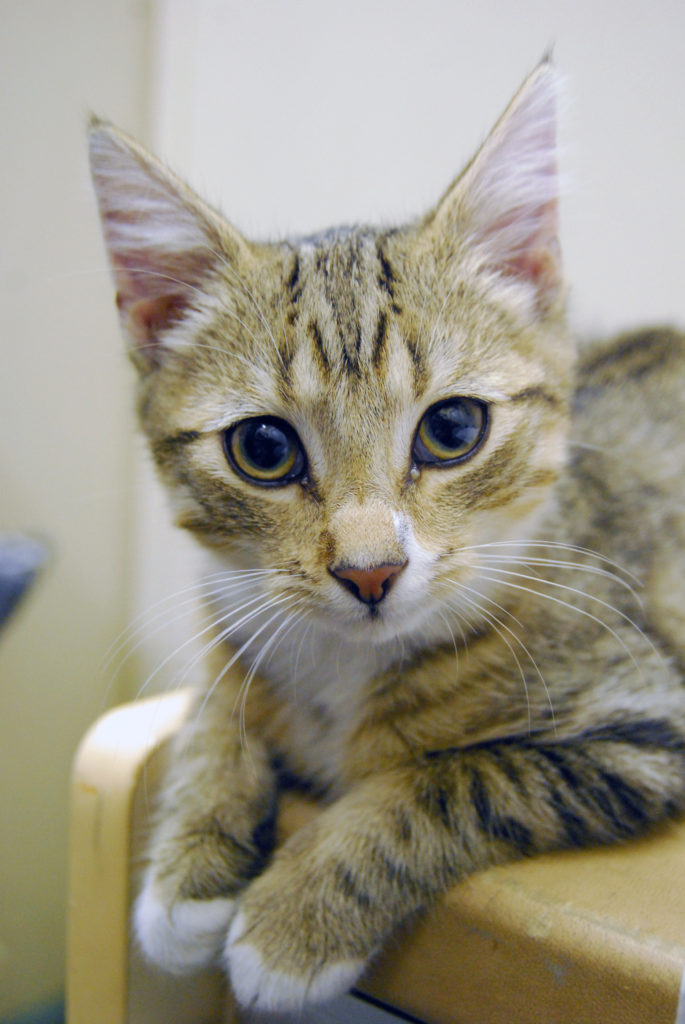
Stay tuned for part 3 to this series, where we cover common behavioural problems in cats and what to do about them. Don’t forget to keep us updated on your journey at Facebook or Instagram at @rspcasa and #rspcasa.


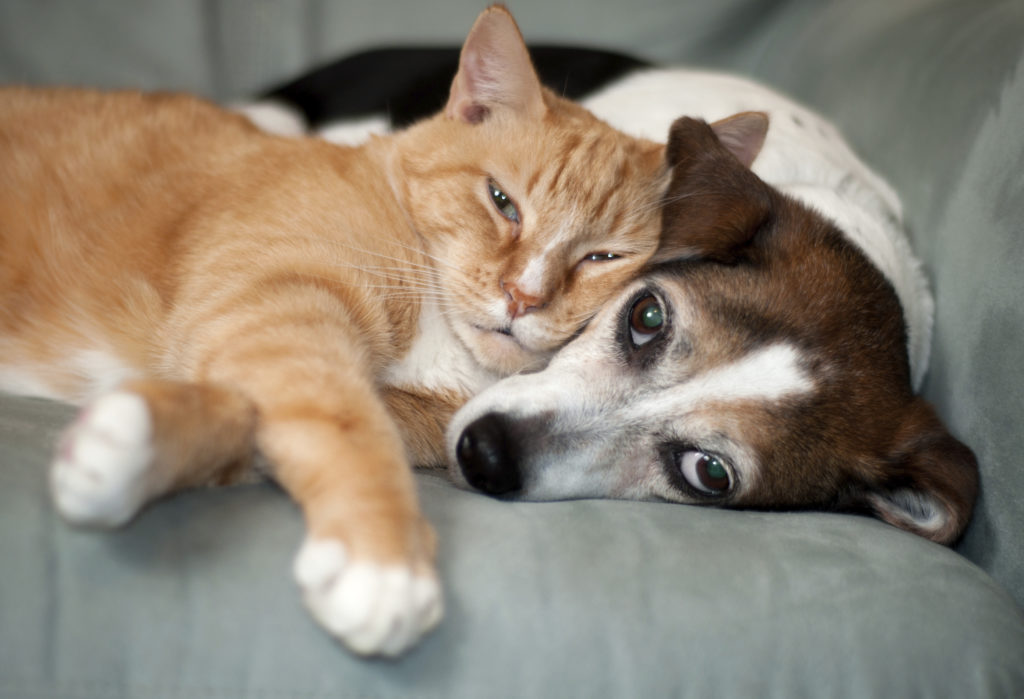


Thanks for the information very helpful
Thanks for the kind words, Robina! We’re so glad you found it helpful :)
My new kitten has been set up in the laundry and has used the litter trays. I don’t allow her to go into the bedrooms often but since my other 4.5yr old fat has been avoiding his day naps inside which he takes in both rooms (he bedhops) I thought maybe my older cat and dog could sleep in my room and the new kitten could sleep in my son’s room eventually I took her in there 1 night when it was his bed time which is usually an hour long process and she peed on his quilt. Do you think she did this because she could smell my other cat or because this was a pretty new area or just that she needed to go and went here? My older cat basically just comes in to eat and sleep at night. He stands by the door wanting to go out any other time. He has stopped hissing at the new cat and I feed them together on different levels of my giant 5 level cat tower. I have to keep the cat food out of the dogs reach.
Hi Sarah, it’s possible that your kitten did this as either a territorial gesture or because she was unfamiliar with the new area – or perhaps she is just not entirely toilet trained yet (even though she has previously used litter trays). If this is a persistent problem, it’s best to err on the side of caution and get a vet check, just to ensure that this behaviour isn’t being caused by any underlying medical issues.
I have a under age orfin kitten. And need some basics on what to do.He was just 3To 4 weeks he is now 5 to 6 weeks many 7 weeks old and is very independent. And wants to go out side. What should I do?
Hi Kevin, we’d advise against letting your kitten roam unsupervised outside, especially since he is so young and could get hurt or lost. You can read more about our cat confinement tips, and how to keep your cat safe on your property here: https://www.rspcasa.org.au/cat-confinement-tips
I have just bought my kitten home and she keeps having is that normal
Hi Sally, please let us know what your kitten keeps having and we may be able to assist. Thank you.
Hi so I just got a kitten and Im pretty sure she is 12 weeks although she is always rambunctious and she follows us around and always wants to be on our bed. We also want to get her used to the whole house. Any ideas?
I hope you still reply!
what is the relationship between kitten and mice? :)
Im getting a kitten soon however the area that im staying has a few rodents about and I havent been able to rid all of them yet as they keep reproducing.
Im unsure if this will be a problem for the little kitten.
Hi Sabrine, traditionally cats will hunt mice but they need time to grow and learn. We would recommend calling in a professional to address the infestation. It will make it a safer environment for your kitten :)
hello,
i hope you still answering questions…
recently i just got a new kitten, it has no problem settling in to the house environment and is not scared to the family members.. but it meows a lot non-stop.. at first i thought that its because he is hungry or something, but all his needs are already provided.. and now i dont know what to do.. thanks in advance.
hello,
i hope you are still answering questions.
recently i just got a new kitten, it has no problem settling in to the house environment and is not scared to the family members.. but it meows a lot non-stop.. at first i thought that its because he is hungry or something, but all his needs are already provided.. and now i dont know what to do.. thanks in advance…
Hi Shelly, there is a myriad of reasons as to why a kitten meows. It could be a cry for attention, a sign of stress or even a health issue. If you think your cat is receiving ample amounts of food and attention you might want to take your cat to your local vet for a checkup.
Thanks so much for this educational post! I just brought home my kitten and he wants to play with my 11-year-old cat but my cat hates him. He’s gotten into fights with other cats when he was younger (maybe six years ago) because he got accidentally loose and had a horrible experience. Is he going to hate other cats forever or is there hope for me to mend this experience from his heart? I really want my two boys to get along….
Hi there!
I’m bringing home an 8 year old kitten (or maybe 2) in a few weeks. They were born outside and I believe they haven’t been inside a house before at all.
I am wondering where the best save haven for my kitten/s will be- the laundry is small but gets a fair bit of foot traffic (we could try to minimise it but might be hard), the bathroom is smaller and probably can’t fit a cat tree in it (I bought a big one, but I do have a cat scratcher thing that would fit), then my room is disconnected to the house so way less noise- but it’s a big room. I do have a rabbit enclosure that I could bring in my room and put them in maybe, while they adjust ?? What’s the best option?
Thanks in advance!
Hi Charli, Kmart sells baby playpens for around $20. We find a large number of our foster carers will use these when looking after kittens, they are portable and typically don’t take up too much room.
We brought home a 5 month old kitten a couple of weeks ago. At the start she was timid but she would let us pet and hold her. As the days pass she has become very reclusive. When we are able to pet her, she no longer purrs. She prefers to lay in her litter box or on cold concrete, rather than her fleece bed. She wants less to do with human contact and prefers to be alone. When we try to play with her she takes the toy and hides away alone with it. Have we missed our opportunity to imprint with her? She has no interest in playing nor does she have any curiosity. It’s like she is devoid of any kitten characteristics. The people we adopted her from are offering to take her back. Is that our best option?
Kittens and cats can take quite a long time to grow comfortable with their new surroundings. With plenty of patience, even the timidest adult cat can come out of its shell.
I just had a 3months old kitten.
He refusing to eat and it alway hiding in a corner
And he howl non stop in the night and refusing to sleep.
What should I do?
Hi Lena, sorry to hear that your new kitten is agitated. Kittens typically have a big appetite if he is refusing to eat I would recommend taking him for a local vet visit as soon as possible.
I can’t stop my new kitten from jumping up on the benches all the time, the word NO and pointing at her or pushing her face down while saying NO does nothing, she repeatedly does it when you are standing there, regardless of what you are doing. Thinking there might be something to eat she refuses to obey and I know she gets up there of a night time while I’m in bed because I have caught her on several occasions. She’s so stubborn will she ever learn? I have never had such a naughty and determined kitten.
Sue
Hi Sue, kittens can be quite the handful and just like people some have bigger personalities than others. I would recommend reward-based positive reinforcement training. Link below on how it works :) Best of luck with your new little furry friend.
https://www.rspcapetinsurance.org.au/pet-care/pet-training/reward-based-positive-reinforcement
Hi my two 10 month kittens that we brought home two days ago seems to ignore me and my spouse. They play, eat and seems comfortable just not with us. They get scared whenever we come close and don’t like it when we try to play or feed them up close. Will they open up to us eventually? Should we leave them alone or keep trying to interact with them?
Hi Will, it sounds like you are doing the right thing. They may take time to grow familiar with you, try taking it slow and be patient. You don’t necessarily need to be handling them, try sitting with them and let them build the confidence to come and sit and play next to you. Cats like people have unique personalities and may have past traumas from interacting with other people. Be patient and gentle, it may take a while before they open up around you. Good luck!
Hello there, I believe your web site could be having internet browser compatibility issues.
When I look at your website in Safari, it looks fine however, when opening in IE,
it has some overlapping issues. I just wanted to provide you with a quick heads up!
Aside from that, fantastic blog! save refuges
Hi, i recently caught 2 “stray” kittens , both have different characteristics even though they are siblings, one would come to me even at the first time i got it, the other is very defensive and wont come and hisses a lot when i come close, so i separated both of them, the 1st one has already befriend our dog, and relaxed inside our home, they were caught 5 days apart
We adopted two kittens. They love my spouse and me. When our son, his spouse and grown child visit our younger kitty HATES them. She hisses, spits, tries to bite and claw. They are cat lovers and owners. The family feels horrible. How cal I entice Polly to love them? Clicker train her?
Hi Melissa, your kitten may need time to grow familiar with them, try taking it slow and be patient. Try sitting with them and let them build the confidence to come and sit and play next to you. Cats like people have unique personalities and may have past traumas from interacting with other people. Be patient and gentle, it may take a while before they open up to them. Good luck!